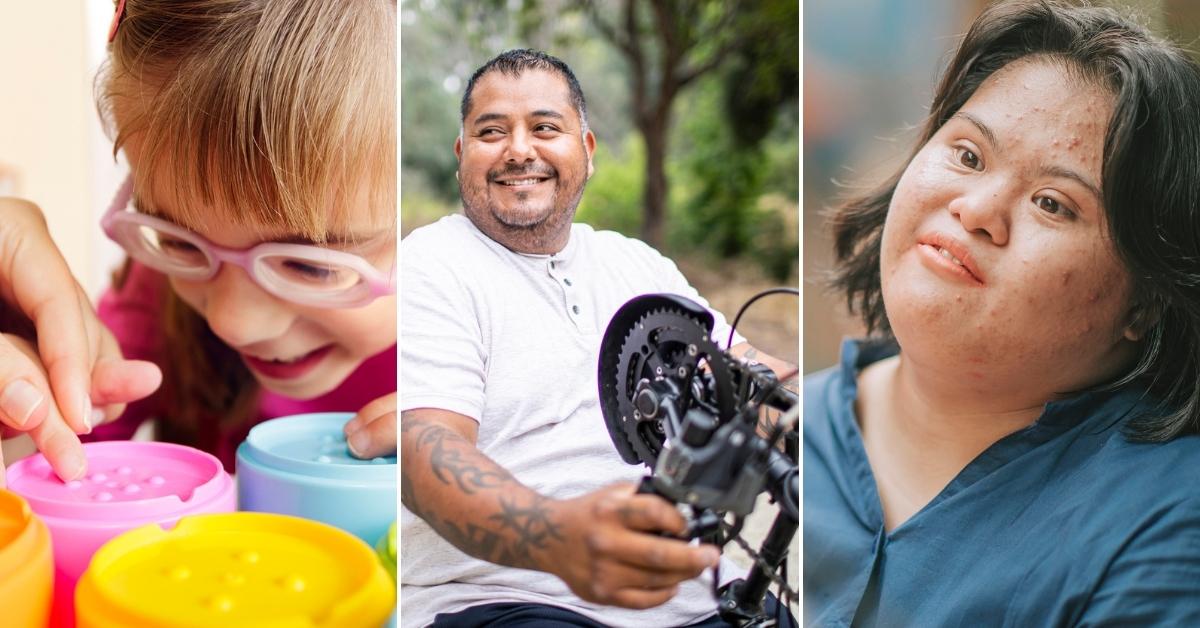Disability Explained
Whether you realize it or not, disability is something that affects everyone. Disability is the largest marginalized community group in the world. We interact with disabled people every day, yet many people wouldn’t know how to define disability if you asked them. Schools hardly touch on disability history, the media only shows disabled people 3% of the time (despite being 20% of the population), and this results in an ableist system that oppresses disabled people. We’re left with little understanding of what it means to be disabled, and the stigma and shame surrounding the topic mean that we’re afraid to talk about it.
Disability isn’t something we should be afraid to talk about – it’s a beautiful, diverse part of the human experience. Joshin is here to give you the basics of what disability means, how to talk about disability, and why you don’t have to be afraid of approaching the topic of disability head-on.
Defining Disability
The Americans with Disabilities Act (ADA) defines disability as – “a physical or mental impairment that substantially limits one or more major life activities”. While that definition is simple enough, it can be a challenge for people to grasp what constitutes a disability and what does not, and some people who qualify as having a disability may not even know it.
Disability is an umbrella term for multiple different diagnoses, which can overlap and co-occur. In this article, we want to expand on the ADA’s definition, by looking at different types of disability. Common types of disability include, but are not limited to:
• Cognitive disabilities: These are disabilities that impact a person’s mental function. This can have an effect on things like communication, social skills, and learning.
• Congenital disabilities: Disabilities that a person is born with are called congenital disabilities. They are often genetic, or inherited, although not always.
• Mental health diagnosis: When a mental health condition has a significant impact on daily functioning, such as working or being able to take care of oneself, then it falls under the umbrella of disability. An example of this would be when anxiety stands in the way of a person being able to leave their home, or perform basic tasks to care for themselves.
• Invisible disabilities: There is a common misconception that the only disabled people who exist are the ones whose disabilities are visible. For example, when someone is in a wheelchair, it is easy to come to the conclusion that they must be either permanently or temporarily disabled. But disabilities look different on everyone – and it’s important that we don’t limit disability to fit into stereotypes. Some examples of invisible disabilities include autism, epilepsy, and cystic fibrosis.
• Chronic health conditions: An on-going health condition that has a significant effect on daily functioning, such as working or being able to take care of oneself, can be considered a disability. Examples of chronic health conditions include rheumatoid arthritis, spinal cord injuries, or autoimmune diseases.
In addition to there being a large variety of disability categories, there are additional nuances to consider when it comes to the disability community. For instance – was this person always disabled (congenital disability), or did this person acquire their disability later in life? Will this person have their disability forever, or is it a temporary disability? Someone may only be temporarily disabled due to a disease, or perhaps their mental health diagnosis is well-managed by medication, so it does not impact their daily function.
Disability is Intersectional
While there is diversity within the types of disability, disability also crosses over with other forms of diversity like gender, race, and socioeconomic status. This is something we refer to as intersectionality, which can be defined as “the interconnected nature of social categorizations such as race, class, and gender as they apply to a given individual or group, regarded as creating overlapping and interdependent systems of discrimination or disadvantage.”
The lived experience of each disabled person is extremely different. It’s important to pay attention to the variety of disabled experiences that are due to both diagnoses as well as intersectionality with other marginalized communities and forms of diversity. Without acknowledging and prioritizing the diversity of experience within the disability community itself, even well-intentioned inclusion efforts could become exclusionary.
Disability is complex, and even though someone may technically fall under the category of disabled – for example, if they have ADHD – they may not self-identify as disabled. This can be due to any number of reasons. The first, and perhaps most obvious, is because the definition of disability is not cut and dry, there are nuances that we mentioned above. The second, it could be because of internalized ableism. Many people are afraid to identify as disabled due to the stigma that exists in our society surrounding disability.
The reality is that while we are hushing conversations about disability, whether intentionally or unintentionally, we’re perpetuating the stigma that disability is something to be ashamed of. In order for disabled people to achieve complete equity in our society, we need to stop being afraid to talk about disability. Disability isn’t a bad or shameful thing – it’s not a dirty word. It might feel uncomfortable at first because of the stigmas surrounding disability, but equity for disabled people depends on allies getting uncomfortable and starting to confront their implicit bias surrounding disability.
Are you ready to take the next step into learning more about disability? Read our article about Ableism and implicit bias produced by Kelsey Lindell to help with your next steps toward allyship for disabled people.
